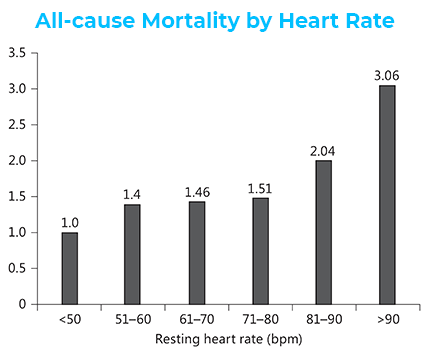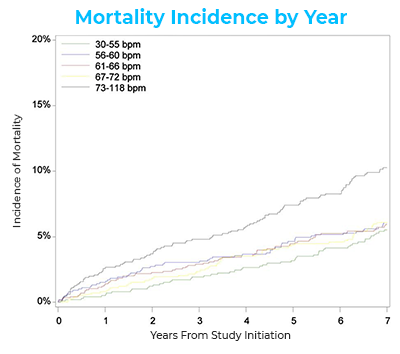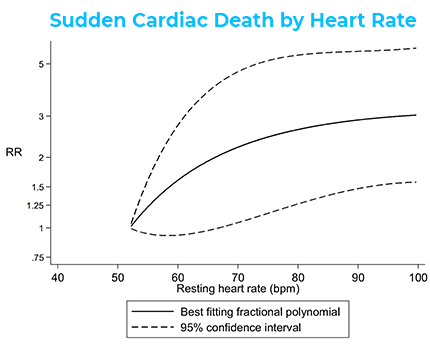My resting heart rate has dropped nearly 10 beats per minute in 9 months. It’s plummeting. At this pace, it’ll be at zero in a few years. It appears I’m dying. Can resting heart rate predict life expectancy? What’s been causing mine to drop so rapidly? And what is an optimal beat rate? Well, let’s get into it!
Heart Rate and Life Expectancy
Large animals have slower resting heart rates than small animals. They also live longer. From mice and hamsters to elephants and whales, slower is better. Although humans are an exception, it can be traced to medical care intervention. For example, most giraffes skip their annual check-ups. Shame on them. This observation was attributed to the higher metabolic rate in small versus large animals. A high metabolic rate leads to the development of free radicals, oxidative stress and faster aging. The faster your metabolism the faster your death. I think I’ll skip those metabolism boosting supplements. [1]
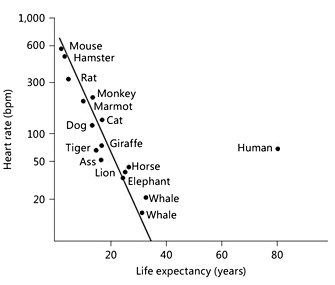
This is the basis of the “rate-of-living theory.” It explains that aging occurs due to exhaustion of some finite resources. Like your heart only has so many beats or your lungs only have so many breaths. Once they run out, you’re dead. Decreasing the rate of each will increase longevity. This theory, as originally conceived, has been debunked. But new data suggests there’s some truth to it [2]. It’s clear that higher resting heart rates in humans are generally bad. It leads to inflammation, oxidative stress, and endothelial dysfunction [1]. This isn’t good. But worse, higher heart rates are associated with heart disease, stroke, and cancer. I don’t like those. And worst, mortality [3]. Higher your heart rate, sooner your death.
Optimal Resting Heart Rate
In the clinical setting, the normal range of resting heart rate is 60–100 beats per minute (bpm) [4]. But as I always say, normal isn’t good. Average isn’t good. I want optimal. I want to know what resting heart rate is best for extending lifespan and increasing healthspan. For that, let’s look at some charts.
A meta-analysis of prospective studies showed that sudden cardiac death occurred least in resting heart rates below 55bpm [3]. The Jackson Heart Study showed that death occurred least in bpm’s ranging from 30 to 55 [5]. No matter where I searched, optimal resting heart rates lie below 55bpm. The optimal range doesn’t even overlap the clinically normal range. Funny. But I thought this statistic was the most useful: All-cause mortality increases 17% for each 10bpm increase in resting heart rate [3]. Each beat you can reduce, decreases your risk of death. Each beat matters.
Resting heart rates can vary based on numerous factors like gender, genetics, and age. So, directly comparing your rate to someone else’s isn’t always helpful. But mine is lower than my brother’s. He’s 12 years younger than me (chronologically but clearly not biologically). Although he may or may not have beaten me in our recent fourth of July 5k, I’d say running speed is a lagging indicator of resting heart rate. So, let’s give it a few months and reassess.
Heart Adaptations to Exercises
As mentioned earlier, my resting heart rate is plummeting. My Apple Watch shows I’ve gone from 58bpm last October to 51bpm this July. I’ve almost lowered my average resting heart rate by 1bpm per month. My research showed that this drop rate is attainable for many people. My Oura Ring on the other hand shows my resting heart rate at 46bpm in January (when I acquired it), to 42bpm now. I think the discrepancy comes from when I wear the devices. I don’t wear my Apple Watch at night. So, for 9 hours each day, it isn’t logging my lowest heart rates like my Oura Ring. Either way, I’m in the optimal range and trending downward.
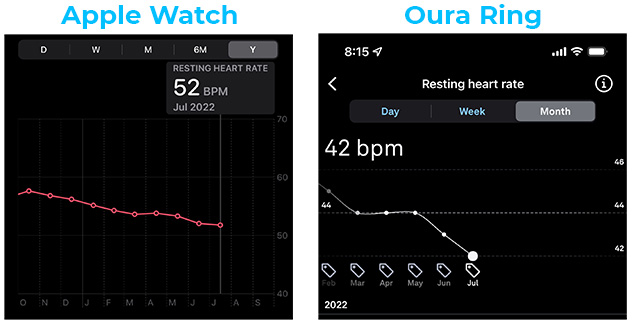
This trend is due to my increased fitness activity and my VDOT running program. Ever since recovering from injuries last summer, I’ve been on a roll. Lifting, running, and rowing my way to lower heart rates. Only time will tell if I can hit the elite heart rate levels seen by endurance athletes in the 30’s.
The primary way to lower resting heart rate is through exercise. Stressing the heart through aerobic or anaerobic training causes adaptations. Hypertrophy occurs. The heart grows larger and stronger [6]. This helps improve oxygen transportation and utilization [7]. In summary, the body becomes more efficient. It needs less pumps, or beats, to accomplish the same work. So, get exercising! As I’ve mentioned before, it could be as simple as doing a 45-minute Zone 2 biking session with a few intervals at the end, four times a week. Throw in a few total body strength sessions and you’re on your way to plummeting heart rates too.
Fun Fact
I think one of my science fair projects in grade school was on resting heart rate. Here I am twenty years later doing the same thing. Hopefully, better. Then again, my dad did most of the work back then. I guess that means I’m now better than my dad!
Final Thoughts
From rats and monkeys to lions and humans, a lower resting heart rate is better. It’s a great indicator of disease and lifespan. Despite 60-100bpm being clinically normal, I found it best to be below 55bpm. The best way to accomplish this is with a consistent, progressive fitness program. As for me, at my current rate of descension, it appears I’m an outlier with only 5 years left on my clock. I hope you enjoy these posts while they last. The end is near.

Hi, I’m Brandon Zerbe
Welcome to myHealthSciences! Every week I share habits for health excellence. I do this by covering topics like Fitness, Nutrition, Sleep, Cognition, Finance and Minimalism. You can learn more about me here.
Sources:
- [1] Heart Rate, Life Expectancy and the Cardiovascular System: Therapeutic Considerations
- [2] Stem Cells and The Rate of Living
- [3] Resting Heart Rate and The Risk of Cardiovascular Disease, Total Cancer, And All-Cause Mortality – A Systematic Review and Dose-Response Meta-Analysis of Prospective Studies
- [4] Association Between Resting Heart Rate, Metabolic Syndrome and Cardiorespiratory Fitness in Korean Male Adults
- [5] Resting Heart Rate and Long-term Outcomes Among the African American Population: Insights from the Jackson Heart Study
- [6] Molecular Mechanisms Underlying Cardiac Adaptation to Exercise
- [7] Exercise Training in Chronic Heart Failure: Improving Skeletal Muscle O2 Transport and Utilization

